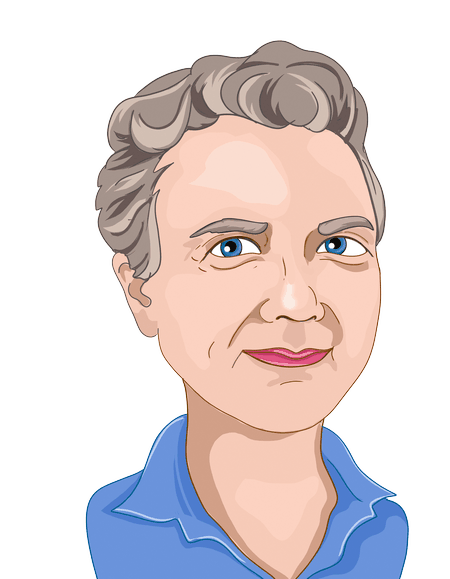

This article is only available to Macro Hive subscribers. Sign-up to receive world-class macro analysis with a daily curated newsletter, podcast, original content from award-winning researchers, cross market strategy, equity insights, trade ideas, crypto flow frameworks, academic paper summaries, explanation and analysis of market-moving events, community investor chat room, and more.
Summary
- A key driver of disinflation has been unit labour costs (ULC, i.e., wage costs per unit of output).
- The ULC growth slowdown largely reflects accelerating productivity growth.
- Fast productivity growth seems more likely to reflect the recovery and unusual output volatility than a trend shift.
- Therefore, productivity growth normalization over the next few quarters is likely to end the ULC growth slowdown and possibly end disinflation as well.
Market Implications
- I still expect the first cut in June and, more likely than not, three 2024 cuts as insurance against the risk of monetary policy being overtight.
- Signs of slower productivity growth are likely to lead the Federal Reserve (Fed) to gradually lift its 2025 dots.
Unit Labour Costs Drive Disinflation
A key driver of disinflation has been unit labour costs (wages adjusted for labour productivity; Chart 1). The correlation between ULC and core Personal Consumption Expenditures (PCE) has been strong since the pandemic and during the 1970s-80s (i.e., periods of high inflation). The correlation weakened from the 1990s to the pandemic, a period of low inflation. This reflects the differences in inflation dynamics, based on regimes.
In a high inflation regime, economic agents are attuned to signs of inflation, such as rising wage costs, and adjust their inflation expectations and price setting behavior accordingly. As a result, signs of inflation such as higher ULCs tend to get transmitted quickly to the whole price structure, which explains the ULC-core PCE correlation.
By contrast, in a low inflation regime, economic agents practice ‘rational inattention.’ That is, they tend to ignore signals, such as wage cost, since they expect inflation to remain low. As a result, the correlation between ULC and inflation is weaker than in a high inflation regime.
The same reasoning applies to the correlation between energy, another inflation signal, and core inflation, which is strong in high inflation regimes and weak in low inflation regimes. The correlation of energy prices with inflation is overall weaker than that of wage costs, which reflects that the US economy is mainly services driven.
Productivity Pickup Drove the Slower ULC Growth
ULCs are equal to nominal wages * employment/real output or nominal wages/productivity. The post-pandemic slowdown in ULC largely reflects faster productivity growth (Chart 2).
The wage measure used by the BLS in the computation of unit labour costs, hourly compensation, shows a YoY acceleration. However, this likely reflects data issues rather than a genuine uptrend (Chart 3). Hourly compensation is based on national accounts data and differs from wage measures based on labour market surveys, such as the Employment Cost Index (ECI) or the payroll survey’s average hourly earnings. Hourly compensation is closest to the Employer Costs of Employee Compensation (ECEC), which measures actual current costs of employment for employers (Chart 3). Hourly compensation is also more volatile than ECI or average hourly earnings.
The ECI, the Fed’s preferred measure of wage inflation, remains the more reliable measure of wage trends because it measures wage growth keeping their distribution constant. ECI YoY growth has been slowing since 2022 Q4, in line with inflation.
Productivity Pickup Largely Cyclical
The recent productivity pickup seems largely cyclical (Chart 4). All recoveries are followed by a productivity pickup. This is because when the recovery starts, businesses typically increase output more than employment.
Businesses can do this because they tend to hoard workers during recessions. That is, they reduce their workforce by less than the reduction in demand for their products and instead lower hours worked (Chart 5). Businesses hoard labour during downturns because hiring workers is costly: workers must be found, hired, and trained, etc.
Productivity Pickup Is Volatility Rather Than a Trend
The pandemic recession and recovery had several unusual features. For instance, firms faced a worker shortage. The increase in the work week shows this, which had never happened during a recession. As a result, labour productivity surged during the recession, rather than the recovery.
Second, output went through unusually large swings, reflecting several factors. The economy experienced mass furlough rather than mass layoffs. Once the lockouts ended, workers returned to work immediately rather than doing lengthy job searches.
Together with the extreme policy support, this led to growth recovering to well above trend, followed by a slowdown to trend. Unprecedented disruption of global supply chains and inventory swings compounded this unusual output volatility.
Overall, output growth was more volatile than employment growth, forming a productivity cycle (Chart 6).
Therefore, there is a risk the pickup in productivity growth in 2023 could be payback for the productivity contraction in 2022. On a three-year annualized basis, productivity growth is slowing and barely above pre-pandemic level (Chart 7). This suggests the ongoing productivity spurt is unlikely to last.
Productivity growth could normalize through slower output growth or faster employment growth. Given the US economy’s strong fundamentals, the latter seems more likely than the former. In turn, stronger employment growth could see wage disinflation slow or even reverse. This would support faster ULC growth and eventually the end of disinflation, though this likely is an end-2024 risk.
Market Consequences
I still expect a first Fed cut in June and, more likely than not, three cuts in 2024. This is because:
- The FOMC has lowered the bar for 2024 cuts.
- Fed Chair Jerome Powell has not pushed back against the market pricing a two-thirds risk of a June cut.
- I expect the stabilization of ULC growth to happen over the next few quarters, as productivity normalizes.
Given the Fed’s perceptions of unusual uncertainty on the inflation outlook, the 2024 cuts would be an insurance against policy being too tight. After all, the Federal Funds Rate (FFR) was 1.75% in 2019, against currently 5.5% (i.e., 375bp higher). Also, the recovery from the pandemic and recent disinflation suggest the Fed must lower the FFR. Three 25bp cuts would still leave the FFR 300bp above pre-pandemic levels.
If my view of slower productivity growth is correct, the Fed is likely to expect a less favorable disinflation backdrop in 2025 than in 2024. Currently, the Summary of Economic Projections (SEP) sees core PCE slowing 60bp in 2024 and 40bp in 2025. As a result, the Fed could gradually remove the two 2025 cuts currently included in the SEP.
.
Dominique Dwor-Frecaut is a macro strategist based in Southern California. She has worked on EM and DMs at hedge funds, on the sell side, the NY Fed, the IMF and the World Bank. She publishes the blog Macro Sis that discusses the drivers of macro returns.
.
